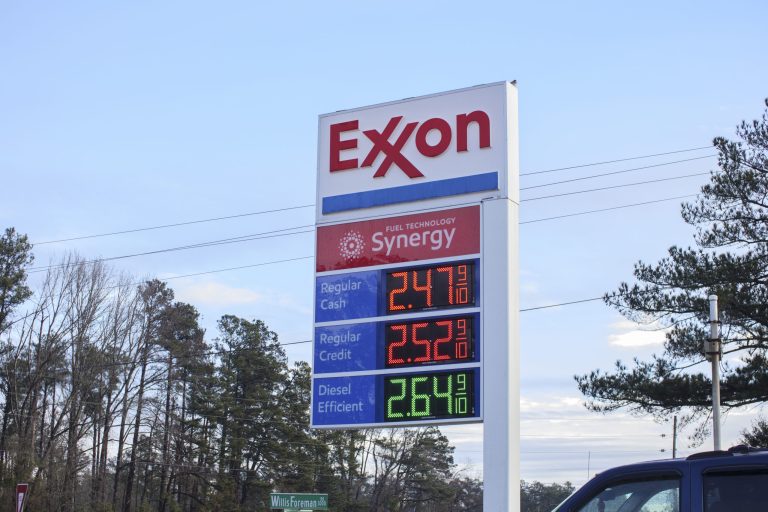ExxonMobil and Chevron, the largest oil and gas companies in the US by market capitalization, reported their Q2 earnings on Friday, highlighting divergent strategies and outcomes in a challenging market.
While both companies faced pressure from declining refining margins, Exxon managed to weather the storm more effectively than Chevron, showcasing its robust strategic adjustments and operational efficiencies.
Exxon Mobil’s strong Q2 performance
ExxonMobil reported a net income of $9.2 billion, or $2.14 per share, marking a 17% increase from the $7.9 billion, or $1.94 per share, recorded in the same quarter last year.
This performance exceeded analysts’ expectations, which forecasted earnings per share of $2.01. Revenue also surged to $93.06 billion, up from $82.91 billion a year ago, surpassing the anticipated $90.99 billion.
The company achieved these impressive results through record production levels in Guyana and the Permian Basin, and a successful merger with Pioneer Natural Resources, which added $0.5 billion to its earnings.
Additionally, the expansion of the Beaumont refinery bolstered margins, and structural cost savings alongside high-value product sales helped mitigate the impact of lower industry refining margins.
Exxon also raised its 2024 output target by 13% to 4.3 million barrels of oil equivalent per day (boepd), following the Pioneer merger.
Darren Woods, Exxon’s Chairman and CEO, remarked, “We achieved record quarterly production from our low-cost-of-supply Permian and Guyana assets, with the highest oil production since the Exxon and Mobil merger. We also set a record in high-value product sales, growing by 10% versus the first half of last year. Our transformative merger with Pioneer was completed in about half the time of similar deals, and we’re continuing to invest in high-potential businesses such as ProxximaTM, carbon materials, and virtually carbon-free hydrogen.”
Chevron’s struggles amidst lower refining margins
In contrast, Chevron reported earnings of $4.4 billion, or $2.43 per share, a significant decline from the $6 billion, or $3.16 per share, earned in the same quarter last year.
The earnings fell short of analysts’ projections, which estimated earnings per share of $2.93.
Although Chevron’s revenue of $51.18 billion exceeded expectations, its profit was adversely affected by lower refining margins, increased operating expenses, and foreign exchange headwinds.
Chevron’s global net oil-equivalent production increased by 11% to 3.29 million barrels per day, driven by the integration of PDC Energy and strong performance in key regions. However, the company’s U.S. downstream earnings plummeted to $280 million from $1.08 billion a year earlier, and international downstream earnings fell to $317 million from $426 million.
CEO Mike Wirth acknowledged the operational challenges, stating, “This quarter, we delivered strong production and enhanced our global exploration portfolio but faced operational downtime and softer margins.”
Following the earnings reports, Chevron’s stock declined by 2.4%, while Exxon’s stock also fell by 1.63%.
Chevron’s share price has dropped about 4.5% over the past year, whereas Exxon’s stock has gained 9%.
Chevron’s proposed $53 billion acquisition of Hess, which would give it a 30% stake in a Guyanese oil field controlled by Exxon, remains stalled due to an arbitration claim filed by Exxon.
This acquisition could potentially enhance Chevron’s upstream production and margins once completed.
Overall, Exxon’s strong performance and strategic moves position it favorably in the energy sector, while Chevron’s challenges and ongoing acquisition efforts offer a mixed bag of opportunities and risks for investors.
The post Exxon soars in Q2 earnings, Chevron slumps: What investors should know appeared first on Invezz



